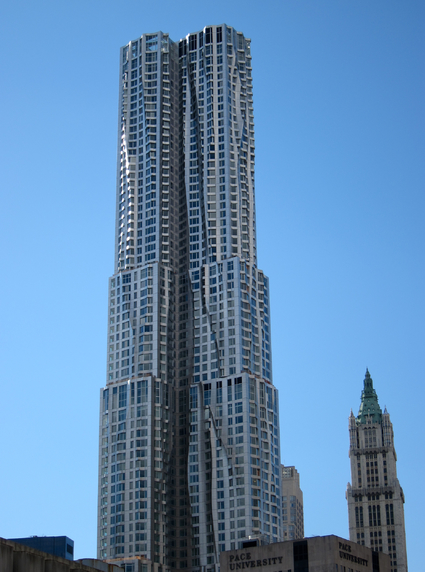In fact, when asked if he had any mentors or idols in the history of architecture, his reply was to pick up a Brancusi photograph on his desk, saying, "Actually, I tend to think more in terms of artists like this. He has had more influence on my work than most architects. In fact, someone suggested that my skyscraper that won a New York competition looked like a Brancusi sculpture. I could name Alvar Aalto from the architecture world as someone for whom I have great respect, and of course, Philip Johnson."
In 1961, Gehry moved to Paris where he worked in the office of Andre Remondet. His French education in Canada was an enormous help. During that year of living in Europe, he studied works by Le Corbusier, Balthasar Neumann, and was attracted by the French Roman churches. In 1962, he returned to Los Angeles, setting up his own firm.
A guest house he designed in 1983 for a home in Wayzata, Minnesota that had been designed by Philip Johnson in 1952 proved a challenge that critics agree Gehry met and conquered. The guest house is actually a grouping of one-room buildings that appear as a collection of sculptural pieces. There is an interesting note regarding a statement Gehry prepared for the 1980 edition of "Contemporary Architects," Gehry states, "I approach each building as a sculptural object, a spatial container, a space with light and air, a response to context and appropriateness of feeling and spirit. To this container, this sculpture, the user brings his baggage, his program, and interacts with it to accommodate his needs. If he can't do that, I've failed."
